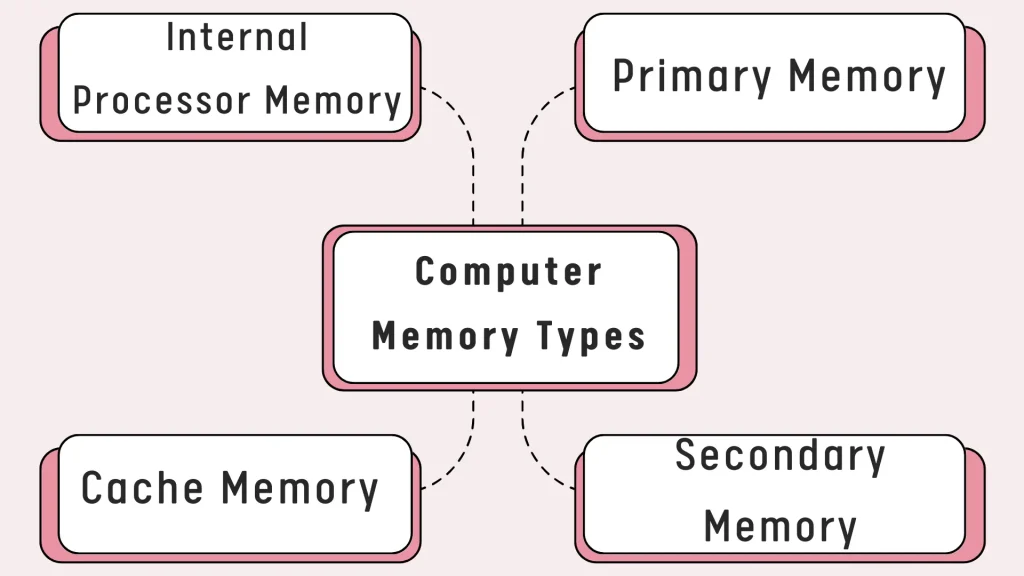Classification of Memory:
Memory in a computer system can be classified into different types based on various factors, including access speed, capacity, persistence, and usage.

Here are the primary classifications of memory:
Primary Memory:
Primary memory, also known as main memory or internal memory, is directly accessible to the CPU and is used for storing data and instructions that the CPU is currently working on.
It is a volatile memory, meaning that its contents are lost when the power is turned off.
The two main types of primary memory are: a. Random Access Memory (RAM): This is the main memory used for temporary storage during a computer's operation. It allows the CPU to quickly access and retrieve data and instructions needed for processing. b. Read-Only Memory (ROM): ROM contains essential instructions and data that are permanently stored and cannot be altered. It is used to store the computer's firmware, including the BIOS/UEFI, which initialises the hardware during boot-up.
Cache Memory:
Cache memory is a small, high-speed memory located between the CPU and RAM.
Its purpose is to hold frequently accessed data and instructions to reduce the CPU's access time to RAM, improving overall system performance.
Cache memory is organised into multiple levels, with L1 (Level 1) being the closest and fastest to the CPU and L2 and L3 being progressively further away but with larger capacities.
Virtual Memory:
Virtual memory is a technique that allows a computer to use part of its storage (usually on the hard disk) as an extension of RAM.
It allows the system to run programs that require more memory than physically available.
Virtual memory uses a combination of RAM and disk space to simulate more memory, but data access from virtual memory is slower than accessing physical RAM.
Secondary Storage:
Secondary storage refers to non-volatile storage devices like hard disk drives (HDDs), solid-state drives (SSD), and optical drives (CD/DVD/Blu-ray).
Unlike RAM, secondary storage is used for long-term storage of data, applications, and files, even when the computer is powered off.
Registers:
Registers are small, high-speed storage locations located within the CPU.
They store data and instructions that the CPU is currently processing or about to process.
Registers are the fastest form of memory in a computer and are used to perform arithmetic and logic operations on data.
External Memory:
External memory refers to additional storage devices that can be connected to the computer system externally, such as USB drives, external hard drives, and memory cards.
These devices provide additional storage capacity for data backup, data transfer, and portable storage solutions.
Flash Memory:
Flash memory is a type of non-volatile memory commonly used in USB drives, memory cards, and solid-state drives (SSD).
It retains data even when the power is turned off and is widely used in portable and embedded devices due to its durability and low power consumption.
These different types of memory work together to ensure efficient data access, processing, and storage, ultimately contributing to the overall performance and responsiveness of the computer. Each type of memory serves a specific purpose and plays a crucial role in the functioning of a computer system.
Thank You.